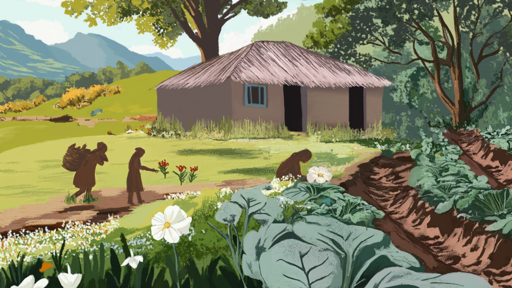The Sibundoy Valley in Putumayo, southwestern Colombia, is an ancestral territory inhabited by two sister ethnic groups: the Kamëntšá and the Inga, descendants of the Peruvian Incas. It is also the place where at least four rivers originate, including the Putumayo, which later joins the Caquetá before flowing into the Amazon. The valley is situated in a region of the Andes known as Nudo de los Pastos, before it branches into three separate mountain ranges, with peaks measuring up to 3,500 meters (11,400 feet) above the sea level and several páramos (high-altitude Andean ecosystems) surrounding it. Although far from the Amazonian lowlands, it is an essential part of the territory, providing water to the rest of Putumayo. Due to its climate, the Sibundoy Valley does not face the same challenges — such as illicit coca cultivation and armed groups — as the lower Putumayo, but it is threatened by cattle ranching and extensive plantations of beans, corn and lulo, which were established in the territory decades ago. Large-scale infrastructure projects such as the new road between San Francisco and Mocoa municipalities also pose a risk to conservation in the area. The Sibundoy Valley as seen from the mountains. Image by Laura Niño/La Silla Vacía. As part of a special on Indigenous guardians coordinated by Mongabay Latam, Colombia’s independent online news platform La Silla traveled to the Sibundoy Valley to learn about the work of three Indigenous women in the defense of this territory, who embody the efforts of many others.…This article was originally published on Mongabay
From Conservation news via this RSS feed


